Violin and saxophone circle like perfectly paired dancers
4.25/5.0




 Surrounded by inorganic synthesizer tones, it's good to be reminded of not just analog sounds, but traditional instruments as well. Woodwind music is rooted in the raw physicality of breath. Strings, on the other hand, can sing with the expressiveness of an unchained voice that transcends mere respiration and can also slant into otherworldly realms. On Never Were the Way She Was saxophonist Colin Stetson and violinist Sarah Neufeld blend their unique sonic fingerprints to find a magic in that meld that yields a yin-yang of cooperation and conflict. Of course, they've had plenty of time to learn each other’s style, working together in Arcade Fire and Bell Orchestre. This album of duets finds them gracefully connecting like perfectly matched dancers; the interplay sounds effortless, but closer attention reveals the complexity.
Surrounded by inorganic synthesizer tones, it's good to be reminded of not just analog sounds, but traditional instruments as well. Woodwind music is rooted in the raw physicality of breath. Strings, on the other hand, can sing with the expressiveness of an unchained voice that transcends mere respiration and can also slant into otherworldly realms. On Never Were the Way She Was saxophonist Colin Stetson and violinist Sarah Neufeld blend their unique sonic fingerprints to find a magic in that meld that yields a yin-yang of cooperation and conflict. Of course, they've had plenty of time to learn each other’s style, working together in Arcade Fire and Bell Orchestre. This album of duets finds them gracefully connecting like perfectly matched dancers; the interplay sounds effortless, but closer attention reveals the complexity.
While Stetson’s side work is always impressive, his solo trilogy series, New History Warfare shows off his development as a master of his instruments. In particular, he’s learned how to harness a variety of techniques -- growls, vocalizations, and creative recording tricks -- to create stunning soundscapes. Over the course of these albums, he’s evolved his vocabulary and expanded the boundaries of the instrument. In his hands, the sax moves beyond breathy riffs and warps into experimental electronic tones and dark rumblings.
Neufeld is perhaps less inclined to play at the outside edges that Stetson enjoys, but her own solo work, 2013’s Hero Brother, demonstrates her stylistic and melodic range. She has a good sense of dynamics and how to build just the right mood. Her playing has a fluidity that accommodates sudden shifts from anxious obsession to angelic soaring, from ethereal reverie to passionate engagement.
Never Were the Way She Was feels like a continuation of Stetson’s recent work, but Neufeld pushes him into dialog with melodic parts that accentuate his ideas even as they offer a counterpoint. As in any conversation, the lead can shift from one speaker to another, and Neufeld and Stetson are comfortable circling one another in this way. But the real treat comes in those rare moments when their playing doesn’t change roles overtly, but the context shifts and, like figure and ground reversing in an optical illusion, suddenly the supporting instrument is standing at center stage. “In the Vespers” is a fine example of this. Neufeld’s staccato violin sets up Stetson’s rolling minimalist line as the focus. While the arpeggiated riff seethes with impatience and ambition, the violin maintains order as it relentlessly slices out its measured pace. In a subtle move, Neufeld modulates the tonal base and Stetson follows, acquiescing the lead to her. The tension builds and Stetson adds an anguished vocalization to his part and the tune becomes a battle of wills. Neufeld disengages and the sax twists in on itself. As the busy notes percolate, the violin returns with longer tones that calm the track down into resolution. Stetson is adept at creating that sense of roiling conflict, so Neufeld’s sense of harmony, both on violin and wordless vocals, provides a nice counterbalance.
Following the model of Stetson’s New History Warfare albums, this collaboration was recorded live, with no studio overdubs. While I’m sure the pieces were largely worked out, these songs have an immediacy that heightens their impact. Thus the anticipation and nervous excitement of “The Sun Roars into View” is visceral as it builds from predawn calm and a rising glow to a fast-motion blur once the day is truly underway. It’s a good start, but my favorite track is the spooky “With the Dark Hug of Time”. It starts off with rattling bass notes and sweeping strings, emphasizing the contrast between the instruments. The bass takes over and builds a plodding rhythm, part elephant and part lurching Frankenstein’s Monster. Stetson’s sax vocalizations creep in, as if the monster were moaning its lament. All the while, Neufeld contributes to the tension with fearful sawing tones. It finally reaches a shimmering pause as the beat drops away. The night calms, fading down to a low rumble and Neufeld’s cooing vocals, both wrapped in a rough distortion that adds a sweet surreal quality.
It’s so nice to hear Neufeld and Stetson circle and build on one another. Never Were the Way She Was is certainly less structured than what they do with Arcade Fire, but this collaboration reflects wild internal worlds without sliding into self-indulgence. And the sound? It's probably like nothing else you've been listening to lately.
4.25/5.0





 Surrounded by inorganic synthesizer tones, it's good to be reminded of not just analog sounds, but traditional instruments as well. Woodwind music is rooted in the raw physicality of breath. Strings, on the other hand, can sing with the expressiveness of an unchained voice that transcends mere respiration and can also slant into otherworldly realms. On Never Were the Way She Was saxophonist Colin Stetson and violinist Sarah Neufeld blend their unique sonic fingerprints to find a magic in that meld that yields a yin-yang of cooperation and conflict. Of course, they've had plenty of time to learn each other’s style, working together in Arcade Fire and Bell Orchestre. This album of duets finds them gracefully connecting like perfectly matched dancers; the interplay sounds effortless, but closer attention reveals the complexity.
Surrounded by inorganic synthesizer tones, it's good to be reminded of not just analog sounds, but traditional instruments as well. Woodwind music is rooted in the raw physicality of breath. Strings, on the other hand, can sing with the expressiveness of an unchained voice that transcends mere respiration and can also slant into otherworldly realms. On Never Were the Way She Was saxophonist Colin Stetson and violinist Sarah Neufeld blend their unique sonic fingerprints to find a magic in that meld that yields a yin-yang of cooperation and conflict. Of course, they've had plenty of time to learn each other’s style, working together in Arcade Fire and Bell Orchestre. This album of duets finds them gracefully connecting like perfectly matched dancers; the interplay sounds effortless, but closer attention reveals the complexity.While Stetson’s side work is always impressive, his solo trilogy series, New History Warfare shows off his development as a master of his instruments. In particular, he’s learned how to harness a variety of techniques -- growls, vocalizations, and creative recording tricks -- to create stunning soundscapes. Over the course of these albums, he’s evolved his vocabulary and expanded the boundaries of the instrument. In his hands, the sax moves beyond breathy riffs and warps into experimental electronic tones and dark rumblings.
Neufeld is perhaps less inclined to play at the outside edges that Stetson enjoys, but her own solo work, 2013’s Hero Brother, demonstrates her stylistic and melodic range. She has a good sense of dynamics and how to build just the right mood. Her playing has a fluidity that accommodates sudden shifts from anxious obsession to angelic soaring, from ethereal reverie to passionate engagement.
Never Were the Way She Was feels like a continuation of Stetson’s recent work, but Neufeld pushes him into dialog with melodic parts that accentuate his ideas even as they offer a counterpoint. As in any conversation, the lead can shift from one speaker to another, and Neufeld and Stetson are comfortable circling one another in this way. But the real treat comes in those rare moments when their playing doesn’t change roles overtly, but the context shifts and, like figure and ground reversing in an optical illusion, suddenly the supporting instrument is standing at center stage. “In the Vespers” is a fine example of this. Neufeld’s staccato violin sets up Stetson’s rolling minimalist line as the focus. While the arpeggiated riff seethes with impatience and ambition, the violin maintains order as it relentlessly slices out its measured pace. In a subtle move, Neufeld modulates the tonal base and Stetson follows, acquiescing the lead to her. The tension builds and Stetson adds an anguished vocalization to his part and the tune becomes a battle of wills. Neufeld disengages and the sax twists in on itself. As the busy notes percolate, the violin returns with longer tones that calm the track down into resolution. Stetson is adept at creating that sense of roiling conflict, so Neufeld’s sense of harmony, both on violin and wordless vocals, provides a nice counterbalance.
Following the model of Stetson’s New History Warfare albums, this collaboration was recorded live, with no studio overdubs. While I’m sure the pieces were largely worked out, these songs have an immediacy that heightens their impact. Thus the anticipation and nervous excitement of “The Sun Roars into View” is visceral as it builds from predawn calm and a rising glow to a fast-motion blur once the day is truly underway. It’s a good start, but my favorite track is the spooky “With the Dark Hug of Time”. It starts off with rattling bass notes and sweeping strings, emphasizing the contrast between the instruments. The bass takes over and builds a plodding rhythm, part elephant and part lurching Frankenstein’s Monster. Stetson’s sax vocalizations creep in, as if the monster were moaning its lament. All the while, Neufeld contributes to the tension with fearful sawing tones. It finally reaches a shimmering pause as the beat drops away. The night calms, fading down to a low rumble and Neufeld’s cooing vocals, both wrapped in a rough distortion that adds a sweet surreal quality.
It’s so nice to hear Neufeld and Stetson circle and build on one another. Never Were the Way She Was is certainly less structured than what they do with Arcade Fire, but this collaboration reflects wild internal worlds without sliding into self-indulgence. And the sound? It's probably like nothing else you've been listening to lately.

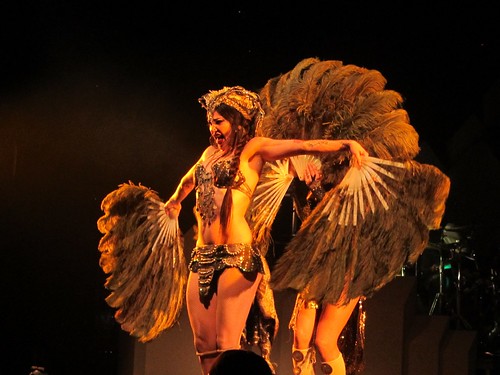


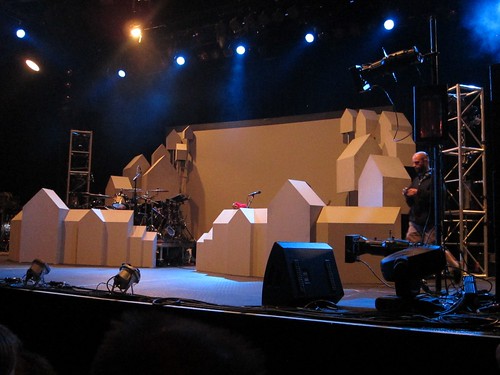
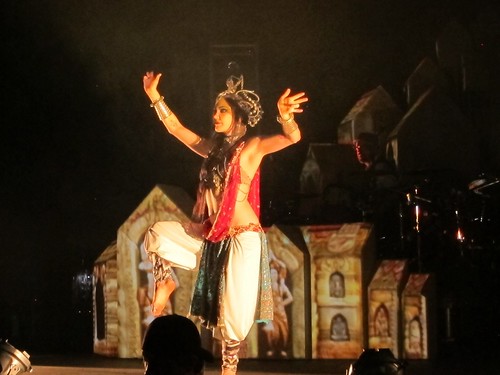
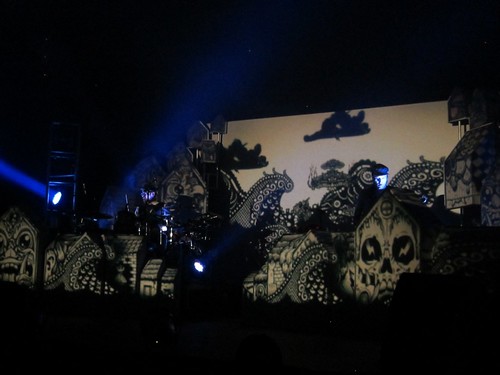

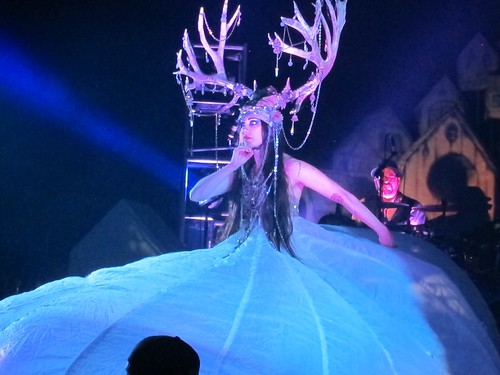
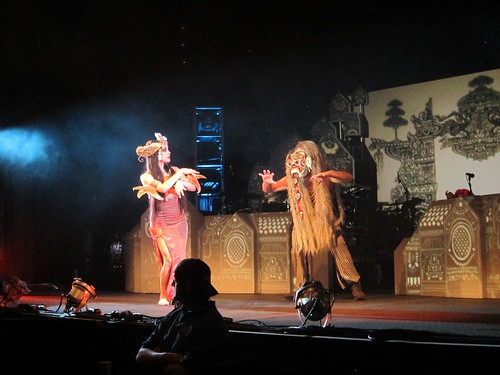

 Sophomore albums are the bane of the recording industry. Band or performers spend years developing their sound and then use up their best material on their debut album. Then they're rushed into the studio to follow up. If their second effort doesn't click, the industry spits them out. There are plenty of performers who overcome, often with the help of the industry, but they're the lucky ones. The indie scene is a little kinder because there's less money at stake, but sophomore albums are often a muddle that doesn't deliver on the freshman hype.
Sophomore albums are the bane of the recording industry. Band or performers spend years developing their sound and then use up their best material on their debut album. Then they're rushed into the studio to follow up. If their second effort doesn't click, the industry spits them out. There are plenty of performers who overcome, often with the help of the industry, but they're the lucky ones. The indie scene is a little kinder because there's less money at stake, but sophomore albums are often a muddle that doesn't deliver on the freshman hype.